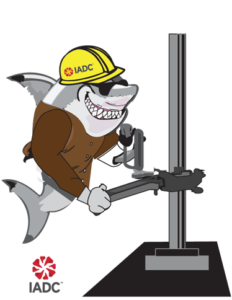IADC ART Spark Tank Meeting Minutes
Date: 4 April 2018
Time: 8:30 – 11:30 am
Venue: IADC
Location:
10370 Richmond Ave, Suite 760
Houston, TX 77042
Contact: Holly Shock
Phone: 1-713-292-1945
Email: holly.shock@iadc.org
Proceedings from 4 April IADC ART Spark Tank
The mission of the IADC Advanced Rig Technology ART Spark Tank, held on 08.30-11.30 on Wednesday, 4 April, 2018, is to provide opportunity to provide technology entrepreneurs an opportunity to pitch their products and ideas (“Sparks”) to a panel of drilling contractors and operators (“Sharks”). The purpose is to provide insights to technology developers into what matters to those they are innovating for.
IADC is grateful to its Sharks for sharing their time, talents, and expertise. Sharks for the 4 April Spark Tank are:
 |
 |
 |
| Sean Halloran | Theresa Baumgartner | Paul Pasusek |
· Sean Halloran, Vice President, Ensign Energy Services Inc.
· Theresa Baumgartner, Drilling Research Engineer, Shell
· Paul Pastusek, Drilling Mechanics Advisor, ExxonMobil Corp

Spark Tank Program
8:30 Coffee and networking
9:00 Welcome & introductions – Robin Macmillan, Chair, IADC ART Committee
9:10 Safety moment, introduction to facility, & IADC antitrust policy Mike Killalea, IADC
Spark Tank presentations. Speakers have 15 minutes, with 15 minutes allotted for Panelists Q&A:
9:15 “The New Pinnacle of Mechanical Solids Separation”: Jan Groeneveld, Evodos BV
Objective:
Have we reached the pinnacle of mechanical solids separation? Since the introduction of Shale shakers in 1922 we have seen various improvements to enhance solids separation and minimize associated fluid losses. However, ultrafines (10-1 micron) are still controlled via dilution. Dilution only hides the problem and does not solve it. Instead of avoiding waste, dilution adds waste which is against the main principle of waste management. Evodos technology minimizes the required fluid volume to be added and results in cost reduction.
Methods, process:
Evodos technology applies 4500G on the fluid while the travelling distance of the particles to be removed is ¼” only. The separation efficiency achieved with this technology is not possible with current technologies.
Downstream of conventional centrifuges, the machines only process a volume comparable to conventional dilution volume and produces a clean drilling fluid whilst keeping the emulsion intact.
Results, conclusions:
Field demonstration with a 2-rig side by side comparison has shown the effectiveness of the Evodos technology. It not only avoided the requirement of 300 bbl’s dilution volume but it furthermore was able to reduce and maintain the LGS content in the mud from 8% to 6% over a 3 well period. The secondary benefits of reducing the ultrafines attribute to higher ROP’s, better wallcake and reduced formation damage. Additional applications have been demonstrated to recondition spent NAF fluids at LMP’
9:45 “The Next Oilfield Step: A Circular Economy Approach to Reuse, Recycle, and Reduce Production Water”: Bill Burch, Ocota Inc.
While the economists focus on the daily fluctuations in the price of oil and natural gas, analysts rarely ever mention the enormous amounts of produced water operators have to handle. It is estimated that at least 1 billion bbls of water is produced daily at a cost of more than $500 billion a year.
Almost all produced water currently is disposed of due to salinity and dissolved ions. Some is treated and reinjected back into conventional reservoirs for pressure maintenance of the field. But operators have faced increased scrutiny and government imposed injection limits for produced water disposal due to earthquakes being linked to salt water disposal wells. In addition, the cost of disposal has increased fivefold over the last decade.
Fresh water is the one of the three key limiting factors in the future of the oil and gas extraction. Using licensed patented carbon nanotube low energy input multi-stage flash distillation equipment technology, Ocota, Inc. is helping to transform the biggest generated waste stream in the oilfield into a value proposition for operators and service companies by helping reduce operating expenses, solving bottlenecks on finding fresh water for drilling fluids, hydraulic stimulation and emergency response, and potentially reducing salt water disposal rates by up to 90% – if not completely eliminating the need for more wells altogether.

